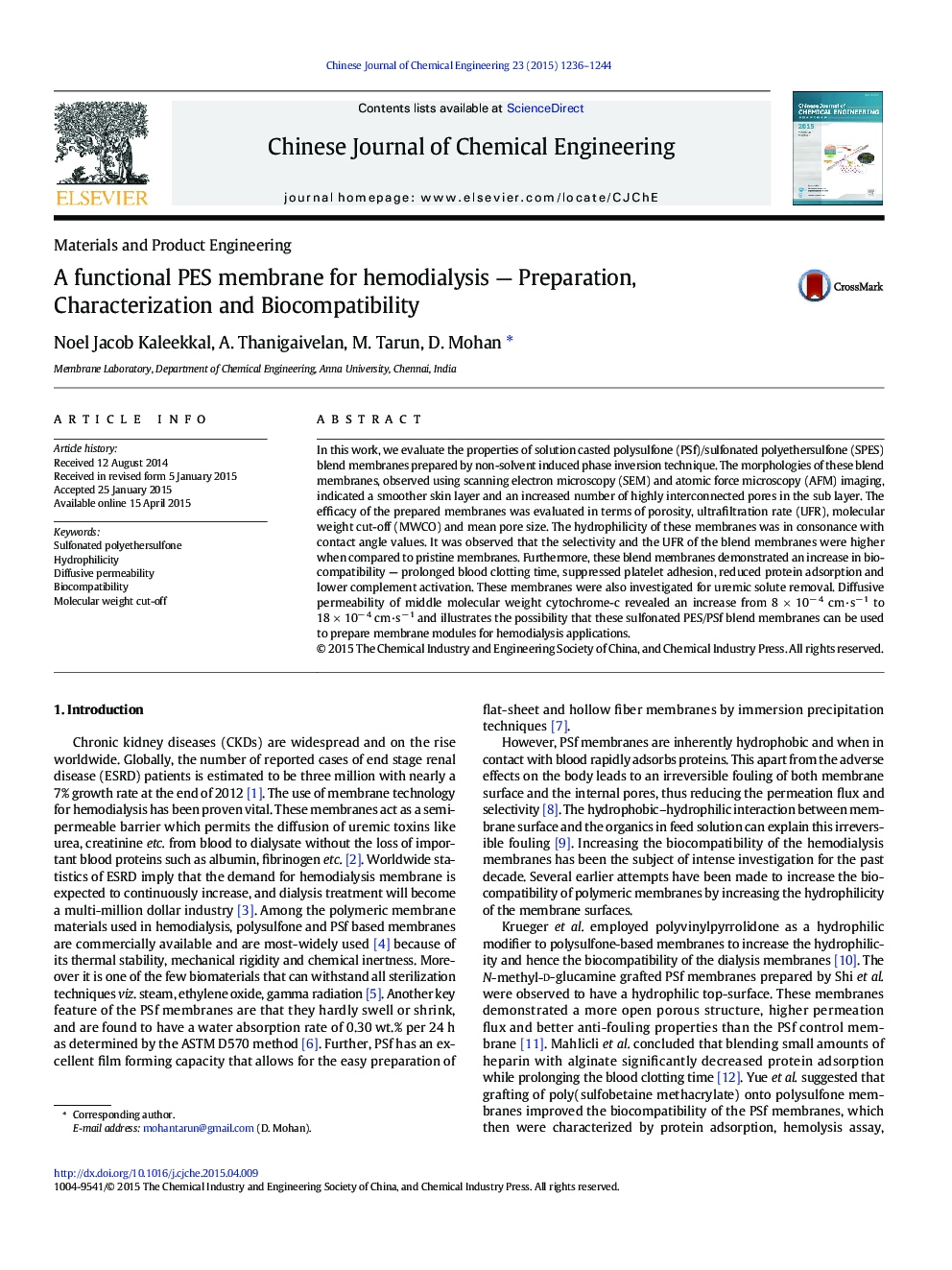| Article ID | Journal | Published Year | Pages | File Type |
|---|---|---|---|---|
| 167114 | Chinese Journal of Chemical Engineering | 2015 | 9 Pages |
In this work, we evaluate the properties of solution casted polysulfone (PSf)/sulfonated polyethersulfone (SPES) blend membranes prepared by non-solvent induced phase inversion technique. The morphologies of these blend membranes, observed using scanning electron microscopy (SEM) and atomic force microscopy (AFM) imaging, indicated a smoother skin layer and an increased number of highly interconnected pores in the sub layer. The efficacy of the prepared membranes was evaluated in terms of porosity, ultrafiltration rate (UFR), molecular weight cut-off (MWCO) and mean pore size. The hydrophilicity of these membranes was in consonance with contact angle values. It was observed that the selectivity and the UFR of the blend membranes were higher when compared to pristine membranes. Furthermore, these blend membranes demonstrated an increase in biocompatibility — prolonged blood clotting time, suppressed platelet adhesion, reduced protein adsorption and lower complement activation. These membranes were also investigated for uremic solute removal. Diffusive permeability of middle molecular weight cytochrome-c revealed an increase from 8 × 10− 4 cm·s− 1 to 18 × 10− 4 cm·s− 1 and illustrates the possibility that these sulfonated PES/PSf blend membranes can be used to prepare membrane modules for hemodialysis applications.
Graphical abstractFigure optionsDownload full-size imageDownload as PowerPoint slide
